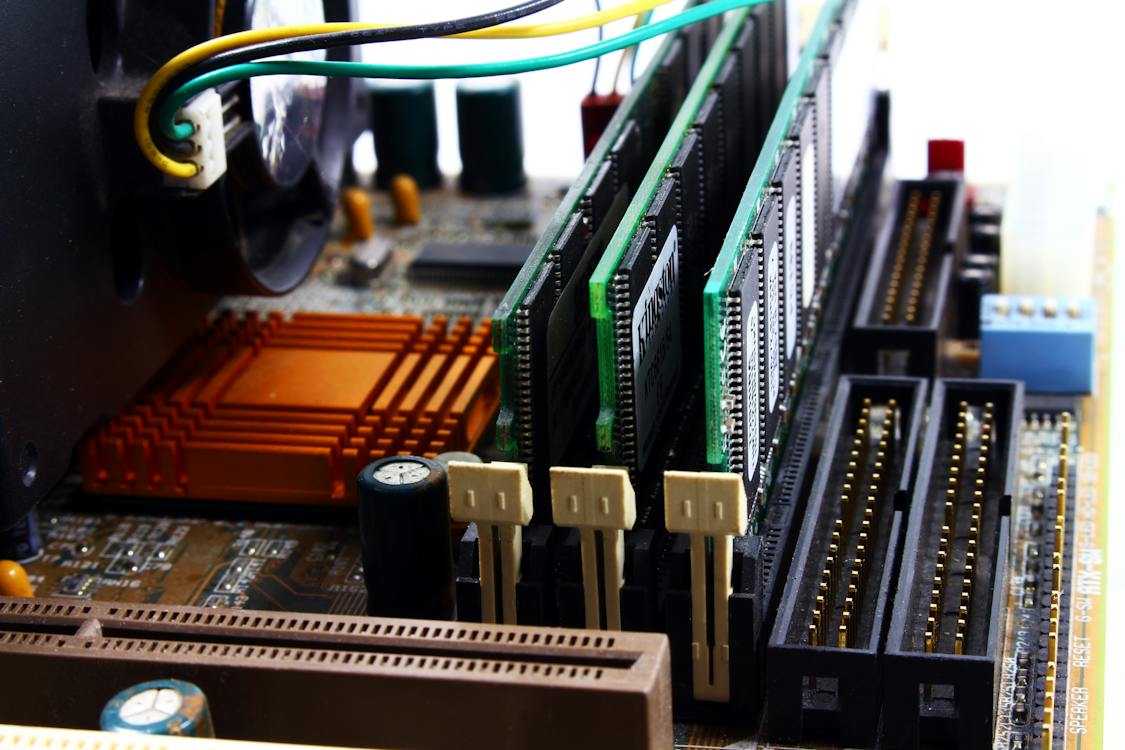The motherboard functions as the brain of your entire computer. Without this essential component, nothing will receive a command and transmit a response from and to the various parts of your PC. This part also holds the graphics card, RAM, and CPU, which are all responsible for the speed and power of your computer.
With all the complex processes that go through the motherboard, it is perfectly reasonable to think that the motherboard itself is complex, as well. Then again, nothing is too complex for us to understand. Fasten your seatbelt for a rough but fun ride inside the world of motherboards.
Motherboard Components
We already know that the graphics card, CPU, and RAM are found on the motherboard. However, motherboards are not as simple as that. To function the way they do, motherboards need the help of the following components:
CMOS RAM
When you are powering your PC on for the very first time, you may notice that it takes an awful lot of time to boot up, but then after a couple of times, it starts to get faster. The Complimentary Oxide Semiconductor Random Access Memory or CMOS RAM is the component responsible for that. It saves the boot-up data onto the motherboard and prevents the computer from reconfiguring every time it powers on.
Expansion Bus
You are going to want to upgrade your computer every once in a while. When that time comes, the expansion bus becomes really important. What it does is that it allows you to plug various expansion cards onto your motherboard, allowing it to process new features you want to adapt to your computer.
Chipsets
There are two chipsets you can find on the motherboard. The Northbridge chipset handles the transfer of data from the processor to the RAM. The other chipset, called the Southbridge, is responsible for the communications coming from the computer’s peripherals, such as the keyboard and the mouse.
CPU Clock
If you ever wonder how a computer responds almost instantaneously to your prompts or commands, that is because of the CPU clock. Depending on the CPU you have on your motherboard, the CPU clock allows it to receive anywhere between 200 million and two billion pulses in a single second. These pulses receive and transmit data from the sender to the receiver.
Different Types of Motherboards
Because of the diversity of the processes that the motherboard handles, it is quite easy to imagine that motherboards can be modified to excel in certain qualities that the user might find relevant or helpful. This gave birth to the different types of motherboards that we’ll discuss here today.
AT Motherboard
This is perhaps the oldest of all the motherboards that you can find in the market today. Born in the ’80s, the AT motherboard served well for PCs that ran on Pentium P5 to Pentium 2. This motherboard is quite big, and the connectors are difficult to distinguish. This means that installing new drives is a grueling task, which sometimes ends up having the wrong connections that cause damage to the computer.
ATX Motherboard
The successor of the AT motherboard is the ATX motherboard, which is also the one that’s widely used today. AT stands for Advanced Technology, while ATX stands for Advanced Technology Extended. This type of motherboard was produced during the ‘90s and is smaller than its AT counterpart.
Some notable distinction of the ATX motherboard is that it has a connector for the keyboard, as well as lots of extra slots for other features you may want to add. This is why the ATX is the most commonly used motherboard when building a gaming desktop computer. As a bonus, the connected parts of the ATX motherboard are also interchangeable.
BTX Motherboard
This tried to solve the problems that came with the rise of new technology. As the various components of the computer developed, they also needed more power, which prompted the birth of BTX motherboards.
Because of the surge of electricity running through the PC, BTX was developed to reduce the amount of heat that runs through the motherboard. However, the development of the BTX was terminated in 2006 as various manufacturers had instead decided to focus on producing low-power CPUs to lessen the thermal energy running through the circuits.
Desktop computers seem to work like magic. With everything that we do on its peripherals, there’s an immediate response that appears on the monitor as if it already knows what to do. However, it only takes a few minutes to understand the basic principles of how they work, and learning more about them will not just drive us to appreciate them more but also to maximize their potentials.
Meta title: Motherboards 101: Top Things Beginners Need to Know
meta desc: Have you ever wondered how your personal computer is able to do almost everything you tell it to do? This would not be possible without the motherboard. Read on to learn more.

